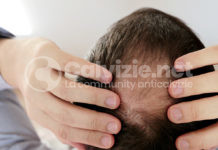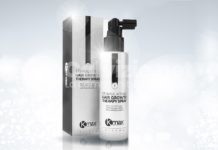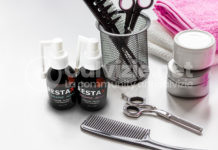 Under normal circumstances hair growth in each hair follicle occurs in a cycle. There are three main phases of the hair growth cycle; anagen, catagen, and telogen (Dry 1926). Anagen is the active growth phase when hair fiber is produced. This is followed by catagen, a period of controlled regression of the hair follicle. Ultimately the hair follicle enters telogen where it is in a so-called resting state. Anagen is the longest phase with up to 90% of follicles on a normal human scalp in this active hair growth state at any given time. The average rate of hair fiber growth is around 0.35mm a day but this rate varies depending on the site of the hair follicle and the age of the individual (Pelfini 1969). The length of the anagen growth phase for scalp hair is around 4-10 years while telogen lasts just 30-90 days (Van Scott 1957). The total number of hair follicles for an adult human is estimated at 5 million with 1 million on the head of which 100,000 alone cover the scalp (Szabo 1958). See the Hair Biology section of this web site for more details.
Under normal circumstances hair growth in each hair follicle occurs in a cycle. There are three main phases of the hair growth cycle; anagen, catagen, and telogen (Dry 1926). Anagen is the active growth phase when hair fiber is produced. This is followed by catagen, a period of controlled regression of the hair follicle. Ultimately the hair follicle enters telogen where it is in a so-called resting state. Anagen is the longest phase with up to 90% of follicles on a normal human scalp in this active hair growth state at any given time. The average rate of hair fiber growth is around 0.35mm a day but this rate varies depending on the site of the hair follicle and the age of the individual (Pelfini 1969). The length of the anagen growth phase for scalp hair is around 4-10 years while telogen lasts just 30-90 days (Van Scott 1957). The total number of hair follicles for an adult human is estimated at 5 million with 1 million on the head of which 100,000 alone cover the scalp (Szabo 1958). See the Hair Biology section of this web site for more details.
Alopecia areata is widely regarded as an autoimmune disease where the anagen hair follicles apparently become the target for an immune cell attack (Ranki 1984, Perret 1984). It is generally thought that in the clinical condition the affected follicles involuntarily leave anagen under the immune cells’ influence, enter catagen and then shed the hair fiber on entering telogen. This increase in telogen shedding of hair is usually focal and later expands outwards in a wave-like pattern (Eckert 1968). The follicles may then proceed back into the next anagen growth phase but, as a result of the continued activity of the immune cell infiltrate, the hair follicles produce poor aberrant hair fiber – the follicle is described as being in a dystrophic anagen state. The affected hair follicles may continue to oscillate through several rapid cycles of dystrophic anagen and telogen (Messenger 1986). What happens beyond this is a matter of some argument (McDonagh 1994). Some researchers believe the hair follicles continue indefinitely in this dystrophic anagen/rapidly cycling state (Van Scott 1958, Messenger 1986). Others believe many of the follicles are eventually arrested in telogen (Swanson 1981).
There is no actual loss of hair follicles even in hairless lesions. Rather, the follicles are not producing visible hair fiber. Associated with this disruption of hair fiber production is a perifollicular (around the hair follicle) and intrafollicular (within the hair follicle) inflammatory infiltrate. This infiltrate is often described as like a “swarm of bees” around the hair follicle bulbs. The immune cells have been identified as primarily T lymphocytes, with the CD4+ cell subtype twice as common as the CD8+ cell subtype (Perret 1984, Ranki 1984, Gollinck 1990, Rook 1991). The inflammatory infiltrate also contains a handful of macrophages, Langerhan?s cells and granulocytes.

A light microscope photograph of a section through an alopecia areata affected hair follicle. Click picure for more details.
































